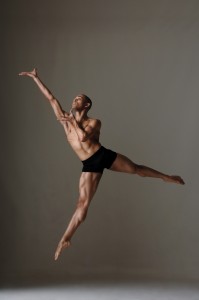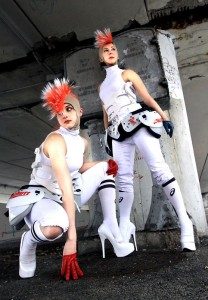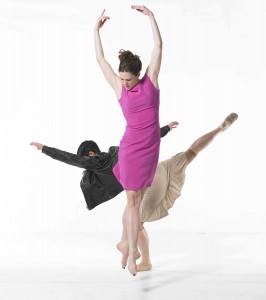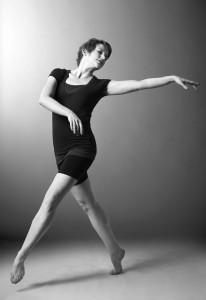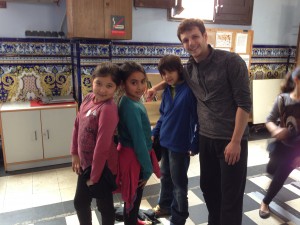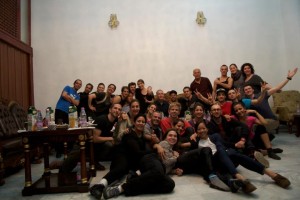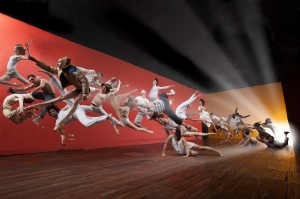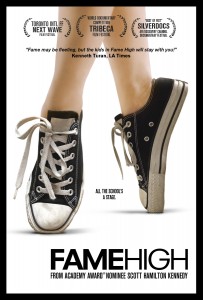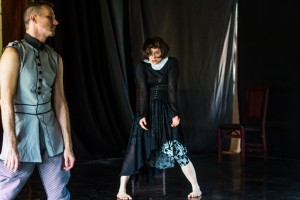If you haven’t heard of Jeremy McQueen; you will. The New York-based dancer/choreographer has had quite a year – and it’s only June! McQueen was one of three choreographers to win Joffrey Ballet‘s Choreographers of Color Award (2013), culminating in the world premiere of his Black Iris at the Harris Theater this past March. Last week he wrapped up teaching a workshop for Motion 41 Dance in Omaha, Nebraska, while last Friday, his new work Au bord de l’eau (At the water’s edge) premiered at Stephens College in Columbia, Missouri. Later this summer, he’ll present a new commissioned work at the Fire Island Dance Festival along with nine other choreographers including Lar Lubovitch and Christopher Wheeldon. In August, he competes as a finalist (for the second year in a row) for Capezio’s Award for Choreographic Excellence (ACE).
McQueen grew up in San Diego, California and began studying music (violin, flute, piano) at an early age and by eight was active in children’s theater. It wasn’t until he was picked on and bullied in 6th grade P.E. class that he opted to take dance as an alternative. While attending a performing arts high school for music, his love of dance really took hold. He then attended the Ailey School/Fordham University, graduating in 2008 with a B.F.A. in Dance. “I just kind of threw myself into a professional career auditioning for whatever,” said McQueen. “I always talk about being well-rounded, so I do see myself as a dancer, but I also do music and theater. I kept my skills up in those areas, so that when I graduated I might have a better shot with different opportunities. I didn’t know what door would open first.” His musical theater background served him well. He was cast in Contact in a Boston-area theater, did two years of the Radio City Christmas Spectacular as well as the national tours of The Color Purple and Wicked. “I always tell people I know what it means to persevere and have patience and faith,” he said. “Wicked was always a show I wanted to be in. I auditioned about nine times over the course of four years before I got the job, but here I was at 23 and I was in the show.”
Leaving the cast without another job lined up was a leap of faith for McQueen, but he was ready to pursue other dreams and goals. Earlier, in 2008, while frustrated with the “audition grind” and missing concert dance, he had gathered a group of friends to “play” in the studio in between projects to see what he could do creating choreography. That turned into a project-based company affectionately called “Team McQueen” and proved to be a blessing after he left the touring circuit. This Friday, Team McQueen will dance (again, for the second year in a row) on the outdoor Inside/Out stage at Jacob’s Pillow. “Choreography was a creative outlet I wanted to explore. I knew that was a long-term goal of mine,” he said. “I really didn’t have a lot of expectations when I started. I wanted to see what I could say with it, not necessarily what I could do or get. I love seeing my vision come to life on stage. It’s been the greatest experience of my life to see my own voice develop through other people.”
For Jacob’s Pillow, McQueen and Team will be presenting three works. Black Iris, the classic, contemporary ballet piece (en pointe) McQueen created on the Joffrey Academy dancers earlier this year, was inspired by artist Georgia O’Keeffe’s painting Black Iris III and represents the strong black women in his life including his mother, godmother and aunt. Dancer Nardia Boodoo, who originated the role in Chicago, will again be the lead. Also dancing in the work, is former Joffrey dancer Brian Gephart, who danced for two seasons with the Atlantic Ballet Theatre of Canada and recently moved to New York City. Gephart and McQueen met in 2006 while attending the San Francisco Ballet summer program and reconnected in April. “It’s such a treat to get to work with someone with that uniquely Broadway-grounded eye for detail and precision and yet have the movement quality from Ailey in the same person,” Gephart said (via email). Gephart is also the lead in another work on the program, an excerpt from a full-length work titled What Lies Within. This piece for seven male dancers has six of them representing the lead dancer’s insecurities. “It’s been a fabulous creation process of letting me explore movement based on my ballet foundation, where I feel so at home, but ultimately working to strip it down to a more pedestrian, relatable place,” he said. “It’s one of those special opportunities where the role pushes you as an artist to something beyond just technique and turns. Making it be ‘human’ and not a ‘dancer’ has been delightfully a stretch for me.”
The final work on the program – the aforementioned Au bord de l’eau – was created in residency with the Ailey School and Stephen’s College and pays tribute to women fighting breast cancer. McQueen has a close friend that is going through this struggle and her beauty and strength inspired him. Discolored nails, losing your hair and even your breast(s) are obvious and notable side effects. “When you go through chemotherapy, you’re in a big room with other people that are in your same situation. There’s a sense of community and mutual support,” he said. “This pays tribute to the courage that women go through in their quest to maintain their femininity during breast cancer.” The all-female piece has the dancers clad in long, pink chiffon skirts, nude bras and 29″ wigs.
The 27-year-old choreographer tends to tackle social issues that have effected his life. And with all his recent success, it doesn’t look like he’ll be stopping any time soon. “People constantly ask me if this is where I thought I’d be at this point in my life. I always tell them no,” said McQueen. “I’ve completely exceeded my expectations of anything I thought I could do. This year has been a blessing. To really see these opportunities unfold has been incredible. I feel so blessed. I’m really trying to live in the moment and enjoy it.”
The Jacob’s Pillow performance will take place Friday, June 28 at 6 pm on the Henry J. Leir Stage and Marcia & Seymour Simon Performance Space, 358 George Carter Road, Becket, MA. Tickets are free.

